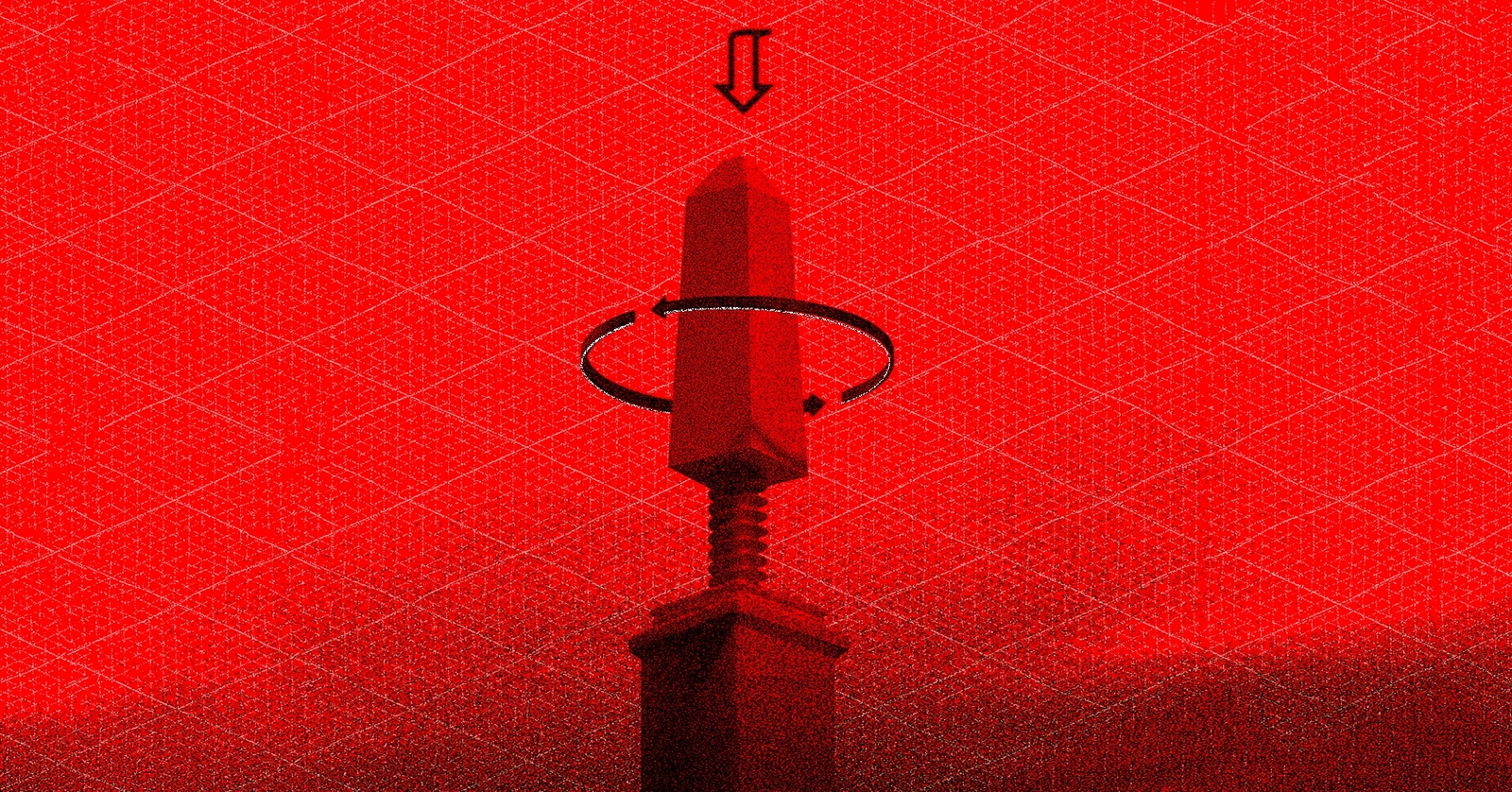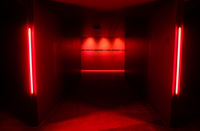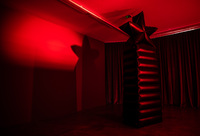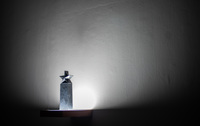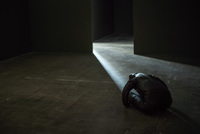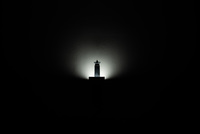"And it seemed to the young man that he saw a whole nation murdered, floating in a sea of heavenly brightness..."
Ignacy Krasiński, The Un-divine Comedy
In 2018, the following statement by Vladimir Putin circulated the media: "The aggressor should know that punishment is inevitable. We as martyrs will end up in paradise and they will die like animals." Taken out of context, the phrase immediately sparked imagination. Collective death – the inevitable vision of apocalyptic stories is fetishized by every authoritarian regime.
If treated as a stylistic device this statement makes us come close to Orwellian descriptions of reversing meanings. Ewa Polak writes about the fading differences between peace and war. "New concepts have emerged (...) that describe various intermediate states between traditionally understood peace and war. They are substitute terms that make it easier to divert attention and hide reality." Dmitry Peskov explains that Putin's words should be seen as an allegory, in which case the politician becomes a creator of morality tales, a teacher of the art of dying. In Putin's speech, there is a clear division between the animal-like death for some and a vision of utopian immortality for others. According to a survey conducted in 2007 by the Yuri Levada Analytical Centre, 18% of Russians want to "live forever". The immortalists demanded the right to eternal life as early as in 1922 on the pages of the Moscow newspaper “Immortality”. Even today, there are groups of scientists and politicians who would like to introduce the right for every citizen to live forever into the constitution. The vision of the human mind travelling into space in the form of rays of light is analogous to the vision of sending a dematerialised nation to paradise. And although it has been interpreted as "fatalistic exaltation”, to the author it appears as extremely beautiful and sublime. This sublimity is characteristic of the entire political area of the cult of the dead.
In his practices, Uladzimir Pazniak confronts idealistic visions of public spaces of memory with the experience of dirty killing and the real dying of an individual. Constructed from fragments of the artist's collection, the exhibition is a subjective image of post-history and post-humanity. It is a universal allegory of the current accumulation of tensions, a dystopian vision of reality emerging right after the apocalypse. Through the archaeological approach we are taken to the final figure of the monument, which embodies the statement of the Russian politician. The author is particularly interested in the atmosphere after this statement. Is the ensuing situation pleasant?
Pazniak uses a well-known sign that first appeared in the communist media in 1908, following the publication of Alexander Bogdanov's novel The Red Star, which described a communist civilisation on Mars. The colonisation of the Universe is inextricably linked to the concept of the neo-human and the great idea of immortality. The monument, which symbolically blurs its significance by changing the material, scale or filling, at the same time illustrates the fluctuations of historical politics. “The ministries of truth" constantly redefine heroes and martyrs, remove old monuments, build new ones and change textbooks. In 2011, a new Red Army memorial was designed in Israel. Citizens of those countries where such structures have been removed for years may feel confused. The prototype proposed by the artist starts a dialogue with national mythologies.
During the conference, television recorded the audience's reaction to Putin's statement. The initial consternation was followed by individual bursts of laughter, which then accumulated into the laughter of the entire room. The viewer will have to decide for themselves whether the artist's visualisation is an allegory of heaven or animal-like dying.
Uladzimir Pazniak (1985) was born in the Belarusian Soviet Socialist Republic. Graduated from the Faculty of Art of the State University of Grodno and the Faculty of Painting and New Media of the Academy of Art in Szczecin (Master's degree, 2016). In his artistic practice he uses such media as sculpture, drawing, performance and video. He won the scholarship of the Minister of Culture and National Heritage (2012) and the award of the Association of Authors ZAiKS in the 8th edition of the competition "Best Diplomas of the Academy of Fine Arts" (Gdańsk, 2016). His major exhibitions include: "Who Wants To Die?" (the RK Gallery, Berlin, 2016), "When The Shit Hits The Fan" (the Centre for Contemporary Art Ujazdowski Castle, Warsaw, 2016) and "The Gallery" (Zona Sztuki Aktualnej, Szczecin, 2016). His works are in the collection of the Zachęta Contemporary Art Gallery.
- Exhibition
- 10 April ‒ 28 May 2021
- artist: Uladzimir Pazniak
- curator: Katarzyna Kalina
- photography: Julia Pałkowska
